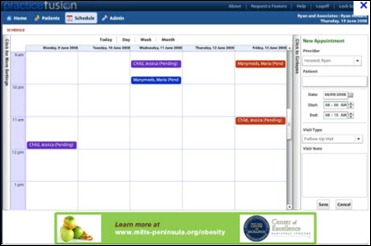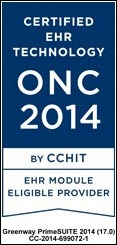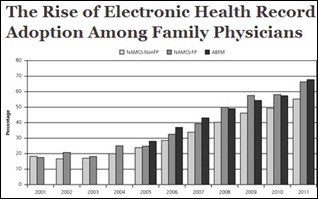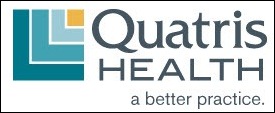News 1/22/13
A growing number of pharmaceutical companies and other businesses are taking advantage of advertising opportunities within cloud-based EMRs. EMRs such as Practice Fusion generate ads based on keywords and allow advertisers to message directly to doctors at the point of care. More than 85 percent of the major pharmaceutical companies currently run ads within Practice Fusion.
athenahealth announces it will offer an anesthesia-specific billing solution for hospitals and independent practices. MedOasis will provide the capabilities for anesthesia coding, charge-entry, contract management, and compliance.
EMR/PM provider iSALUS Healthcare and RCM firm CIPROMS partner to integrate and co-promote their services to physicians.
A study published in JAMA Internal Medicine suggests e-visits may be just as effective as in-person office visits for uncomplicated ailments such as sinus infections and UTIs. Researchers also found patients receiving online care were prescribed more antibiotics, perhaps because providers used more conservative treatments when unable to see patients in person. Even with additional prescriptions, e-visit care costs for UTI patients were less than in-person visits ($74 versus $93 a visit.)
Neighborhood Health Plan and Partners Health (MA) will provide $4.25 million in grants to 49 community health centers to expand HIT systems, train on Meaningful Use and medical coding, and train and build capacity for performance improvement.
Last week HHS Secretary Kathleen Sebelius announced the final omnibus privacy and security rule that expands HIPAA’s reach to business associates, increases penalties to $1.5 million per violation, and clarifies breach notification requirements. One provision that particularly impacts practices is the requirement for providers to give patients their medical information in electronic form if requested, assuming the data is stored electronically. Another provision that could require vendors to modify their software and practices to change workflows allows cash-paying patients to instruct providers not to share treatment information with their insurance company.
AMA News reviews the new CPT codes for transitional care management and complex chronic care coordination, including advice on when to use which code. The new codes went into effect January 1 and allows practices to bill for coordinating the care of patients when discharged from a hospital or with multiple chronic conditions.
Last week the HIStalk Practice Advisory Panel provided some good insight into the resources their practices use when comparing HIT vendor and products. A few of my favorite comments:
Lately we’ve awarded three contracts without a formal RFP or competitive vendor selection process. Unfortunately, that approach has been both expensive and has resulted in us owning products or buying consulting services that have failed to meet the functionality or quality our users desire. Hopefully we’ll learn a lesson soon.
When our administrators looked for an EHR, they simply looked at the market leader in our niche market, got a one-hour demo, and chose it. Turns out that’s not a good method.
Google and Web research. EMRConsultant.com. Personal recommendations from colleagues. Demos, demos, demos. Getting access to a test site for extended, unrestricted hands-on experience seems to be the most helpful.
Greenway Medical Technologies, Inc., announces that Greenway PrimeSUITE 2014 (17.0) is compliant with the ONC 2014 Edition criteria and was CCHIT-certified as an EHR Module.
.













Re: Walmart Health: Just had a great dental visit this morning, which was preceded by helpful reminders from Epic, and…